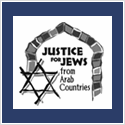Miriam Peretz
JIMENA Kohn Intern, Gina Levy interviewed internationally acclaimed performing artist, choreographer, and dance instructor Miriam Peretz in the summer of 2009.
Why did you choose to pursue a career in Middle Eastern dance, as opposed to other more popular types of dance?
I first started dancing when I was about 13 or 14 and I tried African, hula, ballet, modern, and finally when I took a Middle Eastern dance class I felt like I was at home. The music resonated within my soul and I just felt like, “wow, this is my culture. This is where I come from”. My roots are Moroccan and my father is a Berber Jew. When I went to Israel and saw all of my Moroccan family dancing at parties, I felt so joyful and appreciative that I have this heritage and culture, and it just inspired me more to pursue this form of dance. To be able to present this dance here and in Israel with a whole costume wardrobe is incredibly special!
Can you tell me a little bit about the Jewish culture of dance from the Middle East and North Africa? Is there a history? Are there any specific dances that are particularly Jewish?
I’ve learned throughout my travels that Jews do very similar dances that the Muslims do. There might have been some kind of an interchange, where there was an ancient Jewish dance tradition that got incorporated but it’s very hard to trace, because if you go for example to Morocco, you’ll see the Muslim women and the Jewish women doing almost the same dance. One interesting fact, is that when Islam was in its fundamental stages and prohibiting dance, the Jewish dancers where the ones preserving the cultural traditions of the region, including dance. It’s interesting to note that historically, a lot of the famous dancers throughout Central Asia and the Middle East were Jewish. The Moroccan Dance I do is called Shihad. Shihad is the feminine version of the word Shich, and it means a “woman who knows all”. She knows how to sing, to dance, how to entertain, and she’s knowledgeable. Shihad is actually a kind of sex education since a lot of the movements are pelvic oriented. The dance was an important part of pre-wedding Henna ceremonies and prepared the bride for her wedding night and marriage. Henna parties are like bachelorette parties and are still popular for Jews in Israel. Belly Dance and Shihad are still a major part of Henna parties for both Jews and Muslims. Henna parties can be mixed with women and men, but traditionally in Morocco it was just for women. Also, at weddings you often see belly dancers. In Israel it’s very main stream to have a belly dancer at your wedding, whereas in America it’s not as mainstream.
What is your favorite dance that you’ve performed or choreographed and can you describe a little bit of it, and its significance?
I have a lot! Recently I developed a new stream of my own artistic creativity and that manifested in a piece called “Miriam’s Well”, which is an interfaith performance piece. It’s a dance interconnecting the Christian, Jewish, and Muslim traditions. That’s where I’m currently most excited to go. I’ve taken a lot of inspiration from Middle Eastern dance, Central Asian dance, Modern Dance, and also a style called Inbali, which was developed in Israel. Inbali was developed by Sarah Levi Tanai and it’s a mixture of Yemenite and Modern Dance, with a lot of biblical motifs. That inspiration has fed my work right now along with the Central Asian dance, Middle Eastern dance, and this big fusion of everything I’ve learned on my life journey driving me forward. I’m moving toward developing my own form of sacred Jewish dance. That’s what I’m currently really interested in, but I’m still doing all of the traditional forms. I recently choreographed a piece that was inspired by studies in Tajikistan, because I had the opportunity to do an artist in residency there. The piece is called ‘Shod y’nah’ which means happiness.
What or who has influenced you and been your inspiration?
I’m the Director of a central Asia dance company called Ballet Afsaneh, which means fairytale, the ballet of storytelling, and we promote central Asian dance. My director, Sharlen Sawyer has been a major inspiration in my artistic and dance journey and her story is very similar to mine. She actually started off as a teenager with Middle Eastern dance (belly dance) and she did all the styles that I do. She did the traditional forms, the more modern cabaret forms, she did Turkish gypsy dance, and then she kind of migrated toward central Asian dance and I’m finding myself on that similar journey. I still do Middle Eastern but I definitely have moved more into Central Asian dance and am finding myself in my adulthood more drawn to preserving those dance forms. So my director has been a real inspiration for me, throughout everything.
What message or meaning do you hope to promote through your choreography and expression?
I feel like I have a role as being a cultural ambassador because of all of the knowledge I’ve obtained as a student of traditional dance forms. I want to keep the beauty of the traditional dance forms alive and promote them for those cultures. Dance has been a tool of education for Americans and people who know nothing about the culture of Central Asia, the Middle East, and North Africa. For example, my company (Ballet Afsaneh) and myself as a soloist do Afghani dance, and I feel like that’s been really important, because of what’s been going on politically. People should see this gorgeous culture and the dance form that isn’t always seen, and as well as with Iranian dance. My other message would be using dance as a way to build bridges, especially religious ones. I’m really interested in interfaith work and using dance as a vehicle for interfaith dialogue in Israel especially between Jews and Muslims. It’s something I would like to pursue more, eventually going back to Israel and applying my experiences there. This dance is really a hybrid that incorporates both cultures and I would like to use it as a way to open up dialogue and bridges between the religions and different cultures.
For more information, please visit: www.miriamdance.com




